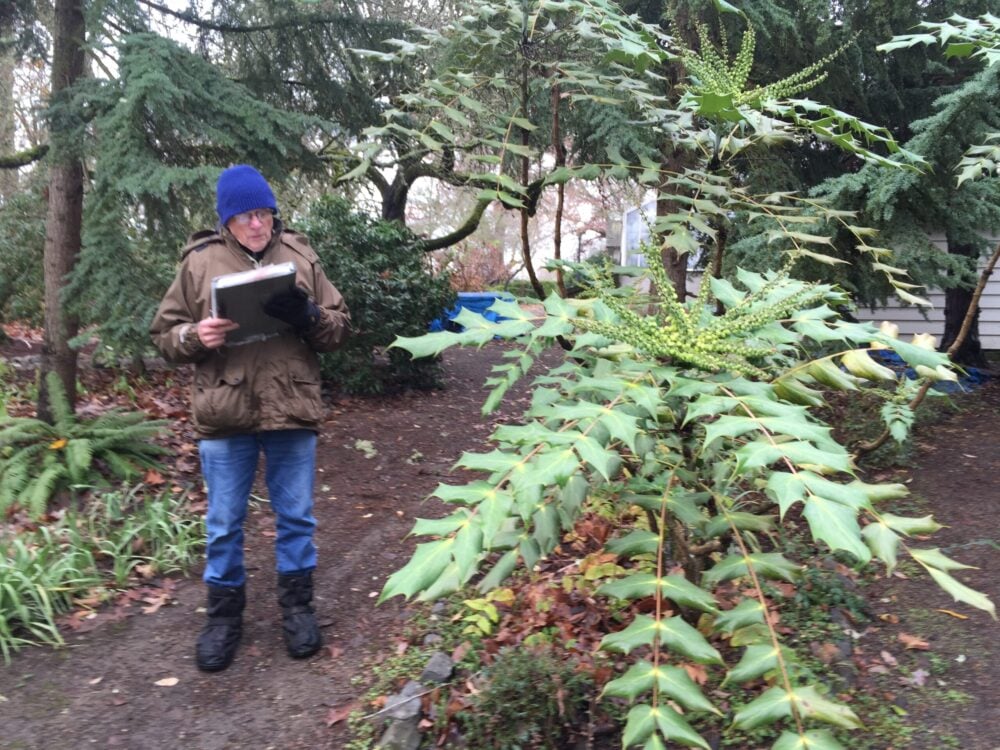
Pacific Plant People Recommendations: Iris x germanica, Bearded Iris
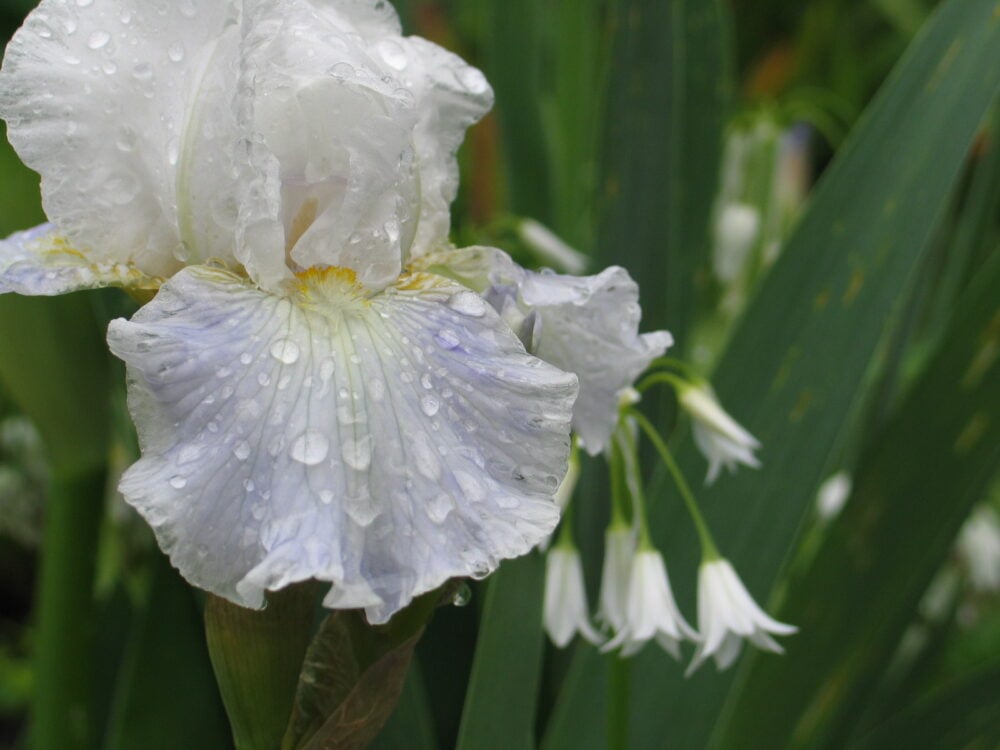
Contributor
- Topics: Plants You Need
Fall 2025
Plant Recommendations by Pacific Plant People highlight climate-resilient, water-wise, and habitat-friendly plants well-suited for the Pacific region. Many recommendations prioritize native species, but some non-natives that thrive in a Mediterranean climate are also featured.
For Best Viewing, please use Desktop or Rotate Mobile View to Landscape


Iris x germanica, Bearded Iris
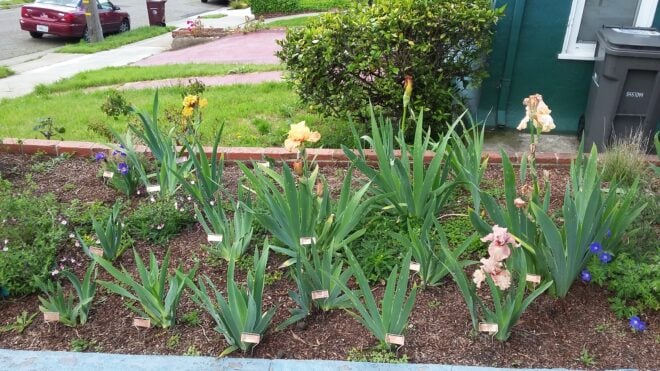
Jennifer is a California licensed Landscape Architect and educator with over 20 years professional experience. Her qualifications include being a LEED Accredited Professional, ReScape CA Qualified Professional and Rater, and Qualified Water Efficient Landscaper. She grew up in Southern California but earned her BLA in Landscape Architecture from Oklahoma State University. Jennifer is self-employed; she enjoys a wide mix of projects from landscape architectural design work to consulting and public speaking.
All photographs courtesy of the author, Jennifer de Graaf
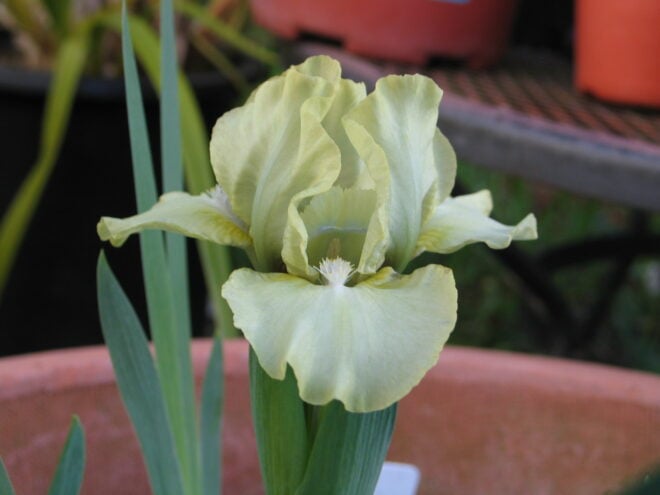
Iris x germanica, Bearded Iris

Plant family: Iridaceae
Genus: Iris
Species: x germanica
Description
Bearded iris are herbaceous perennials with sword-shaped leaves that are a grey-green in color. They are rhizomatous. As leaves come and go over the years, the leaves on a rhizome come from the growing eyes of the rhizome, it can fan out in multiple directions, forming a clump with age. The flowers usually come several to a stem, blooming sequentially. Wikipedia claims that the roots can go 4” deep, but I’ve had much deeper roots than that when I’ve dug them up for dividing in the fall.
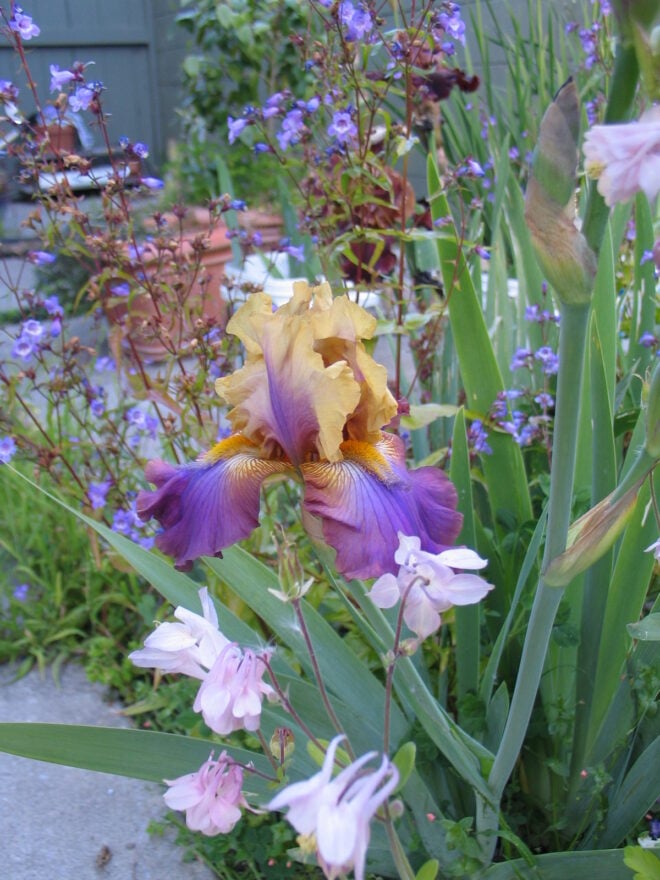
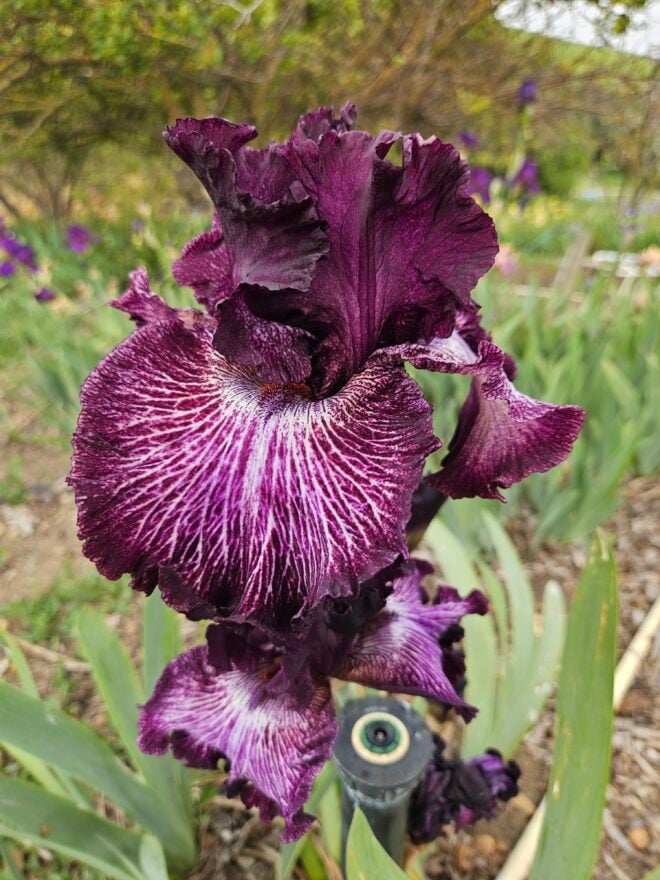
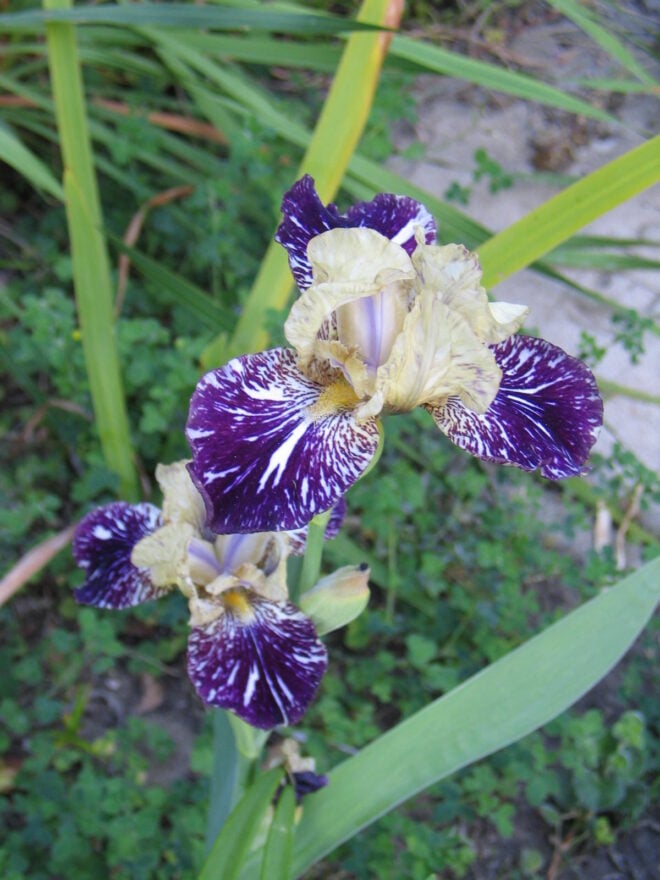
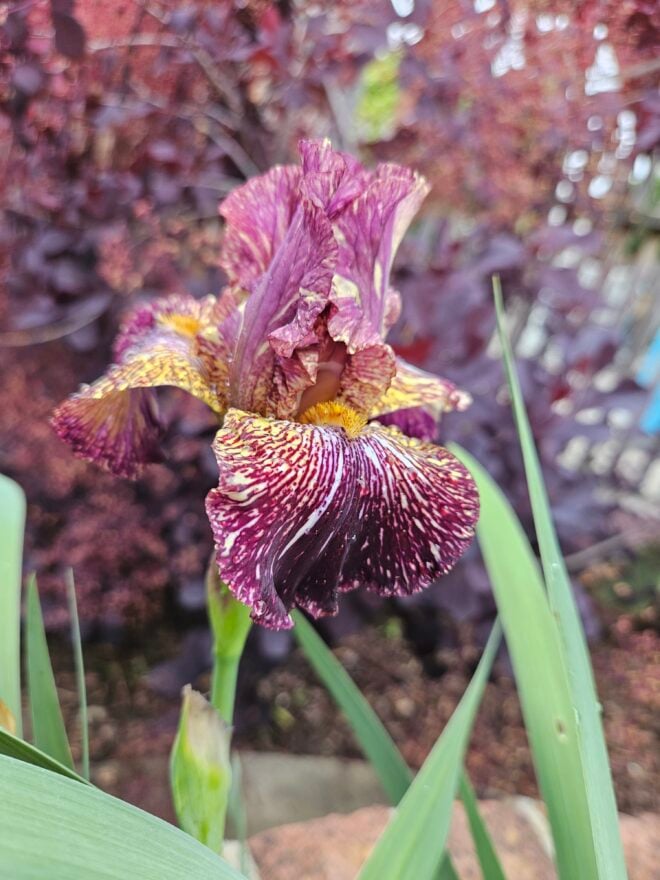
Water Use
Low.
Conditions When It Thrives
Well draining soil that is slightly acidic, but tolerant of a wide range of soils.
Ecosystem Services
Less environmentally beneficial than native species, but can support bumblebees and butterflies, provides shelter for bees, and they’re beautiful.
Native To
Believed to be a naturally occurring interspecific hybrid found naturalized across central and southern Europe.
Geographic Range
Found across Europe and north America. They are not from north America, but have escaped cultivation in some places.
Availability
Widely available by mail order, available with much less variety at retail and wholesale nurseries. There are hundreds of online growers hybridizing and selling thousands of cultivars online.
Habitat & Height
Upright habit, foliage to about 18” but tall bearded iris’ bloom stems can reach 48” depending on cultivar.
Special Features
Bearded irises are named such for the fuzzy “beards” on the falls (lower petals).
Solar Exposure
Full to part sun
Hardiness or Other Zones
Hardiness zones 3-9, sometimes 10
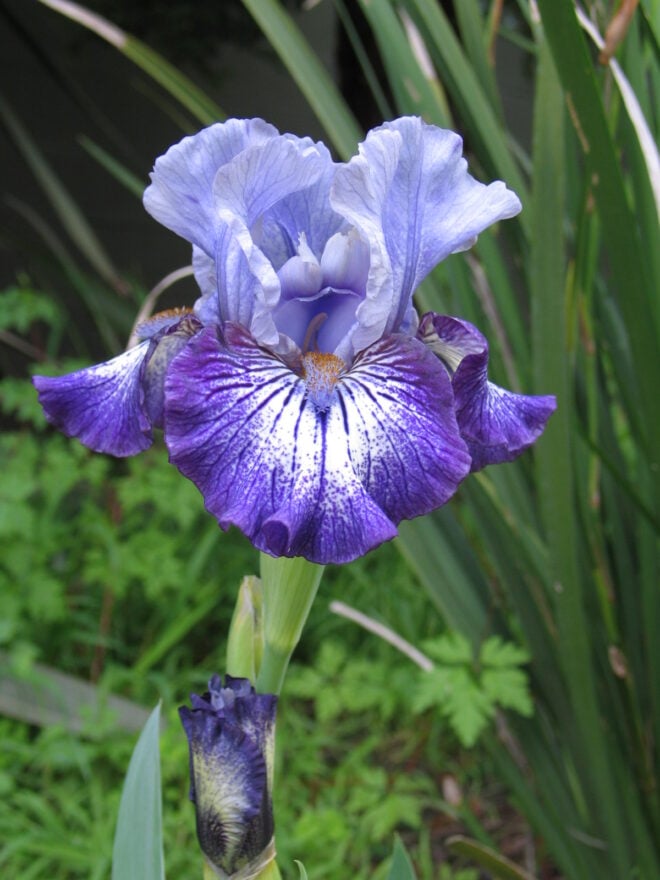
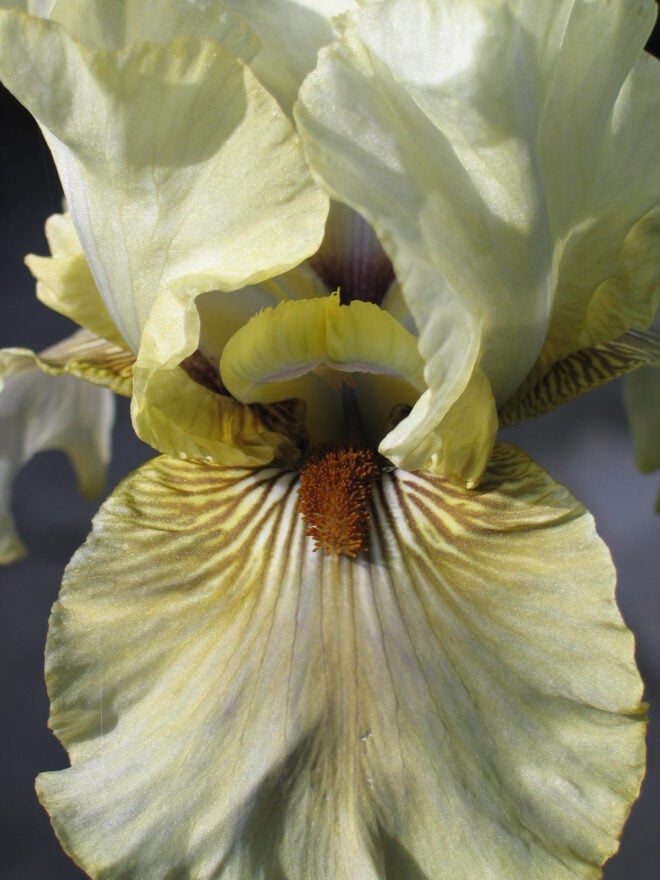
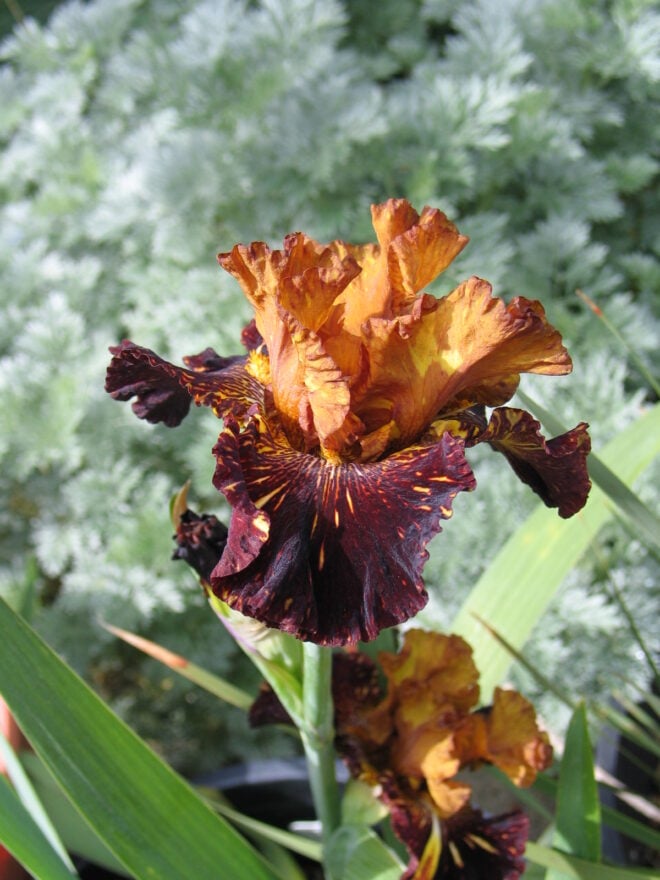

Bearded Irises come in several classifications. There are six classifications based on height and flower size from Miniature Dwarf Bearded (MDB) which are 8” tall or less to Tall Bearded (TB) with flower stems above 27.5” in height, some like Standard Dwarf Bearded prefer colder winters than others. Since classifications are based on size and parentage is mixed, various cultivars may perform differently even within a classification. My personal favorite is Miniature Tall Bearded that has smaller flowers on tall stems – so elegant!
Why They Love It
Bearded irises come in all kinds of colors and are eye-catching from far away with their large blousy flowers, but some are stunning up-close, making them a favorite of botanical artists and photographers. I love that they’re tough as nails and I can divide them with no trouble at all.
Seasonal Appearance/Dormancy
They grow a new set of leaves in late winter to early spring that replace the abandoned leaves from the fall before.
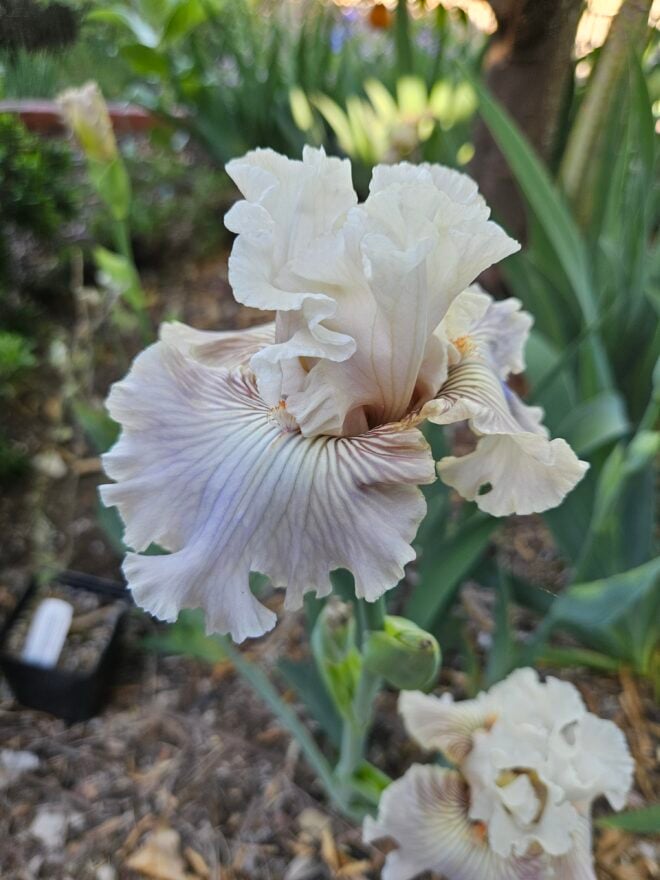
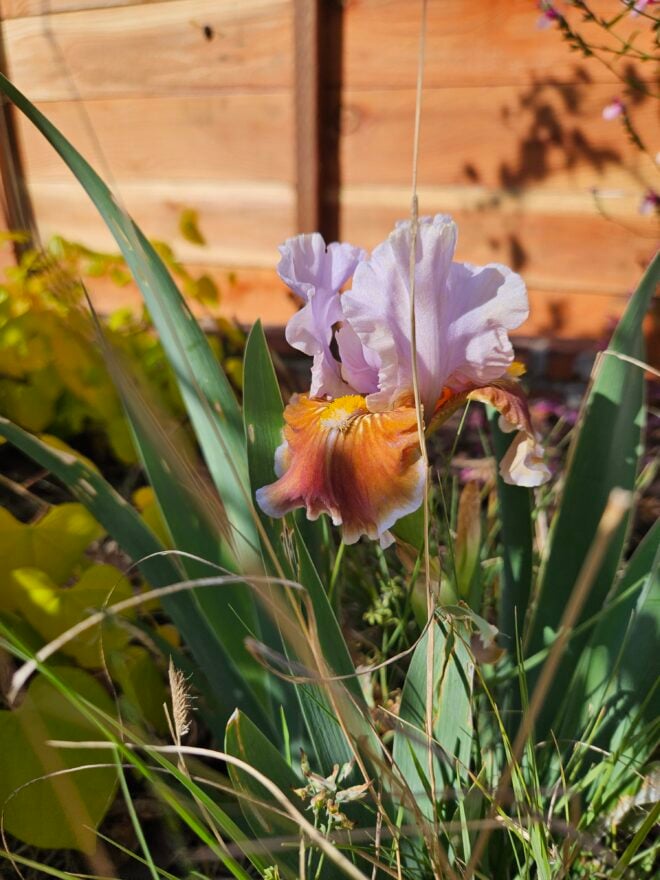
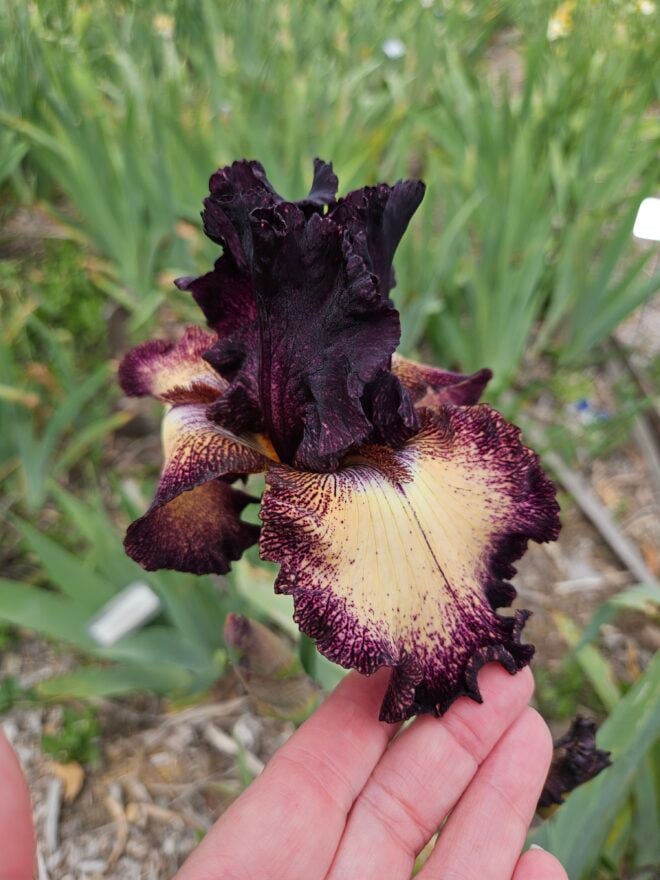
Advice, Design, Care Notes
It is advisable to visit an iris grower to be able to appreciate the subtle differences in foliage and be able to choose what cultivar might have the colors you want. Some irises show better than others in person and different kinds of light (shade vs sun) can make a huge difference in how the colors reflect the light.
Bearded irises are prone to few pests depending on where you are and the conditions they’re grown in. Mine have had spittlebug and powdery mildew, neither of which has been very troublesome.
Iris should not be given high nitrogen fertilizer because it can contribute to two problems: foliage growth at the expense of flowers and rot of the rhizome.
Other Thoughts
Even though the books and online resources will tell you to divide every couple of years, I won’t ever forget a particular clump of Purissima I saw at Filoli that had seemingly not been divided for a while. It was the most in-your-face clump of perfect historic white irises I’ve ever seen. Dividing should be done when a clump is getting too sparse, too overcrowded, or encroaching into the neighboring plants too much. I don’t agree that it needs to happen every couple of years unless you really want more of them.
Classifications usually get abbreviated in catalogs and the heights are as follows:
https://www.irises.org/gardeners/care-classification/classification/
- Miniature Dwarf Bearded (MDB) up to 8”, earliest bloomers
- Standard Dwarf Bearded (SDB) 8” to 16”, early bloomers
- Intermediate Bearded (IB) stand from 16” to 27.5” tall, also early bloomers
- Border Bearded (BB) same size as the IB’s, but bloom later with the TB’s
- Miniature Tall Bearded (MTB) flower at the same size as the TB’s but are much daintier in flower size.
- Tall Bearded (TB) 27.5” and up, flowering with big flouncy blooms across thousands of cultivars.

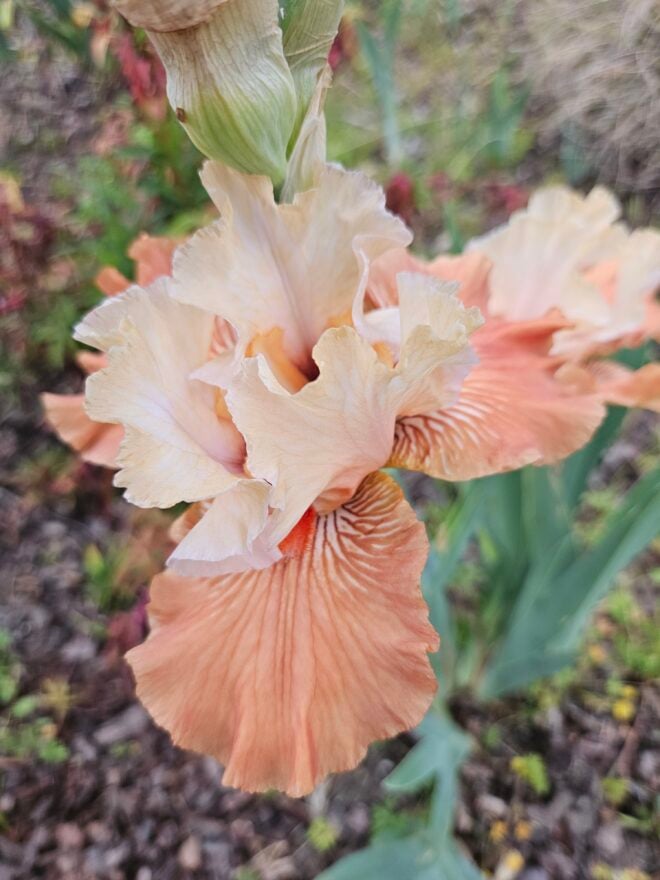

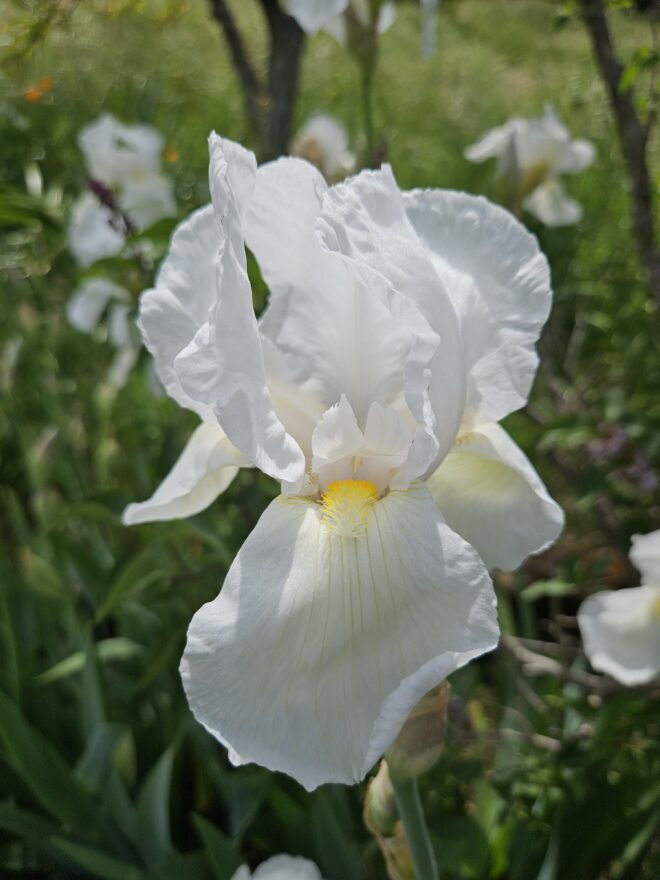
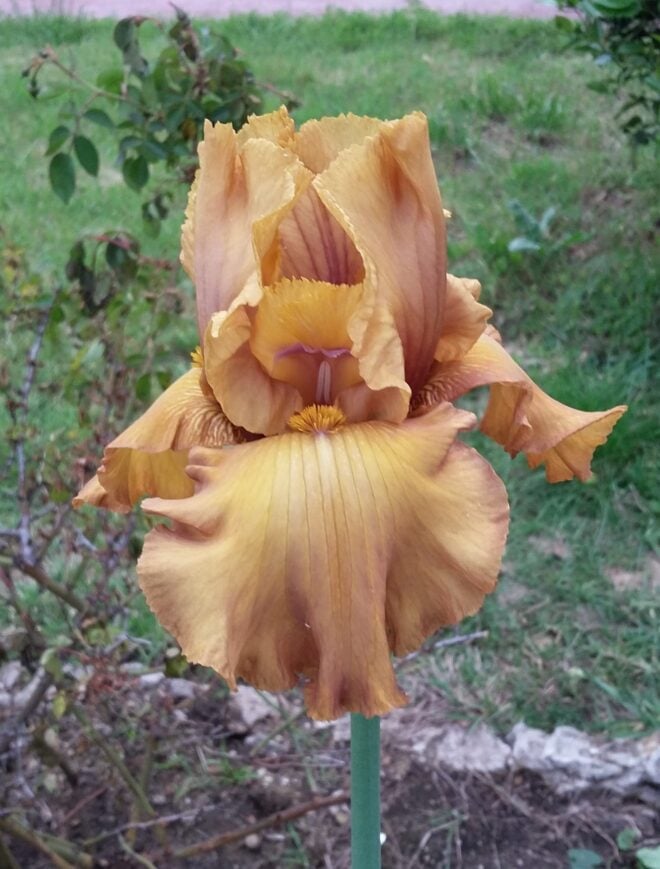
Pillars: Does the plant contribute to any of these topics especially?
- Drought Resilient – Yes
- Natives For Habitat – No
- Biodiversity Boosters – No
- Food For People – No
- Life Not Lawn – Yes
- Multi-Season Interest – Yes
- Rain Gardens – No





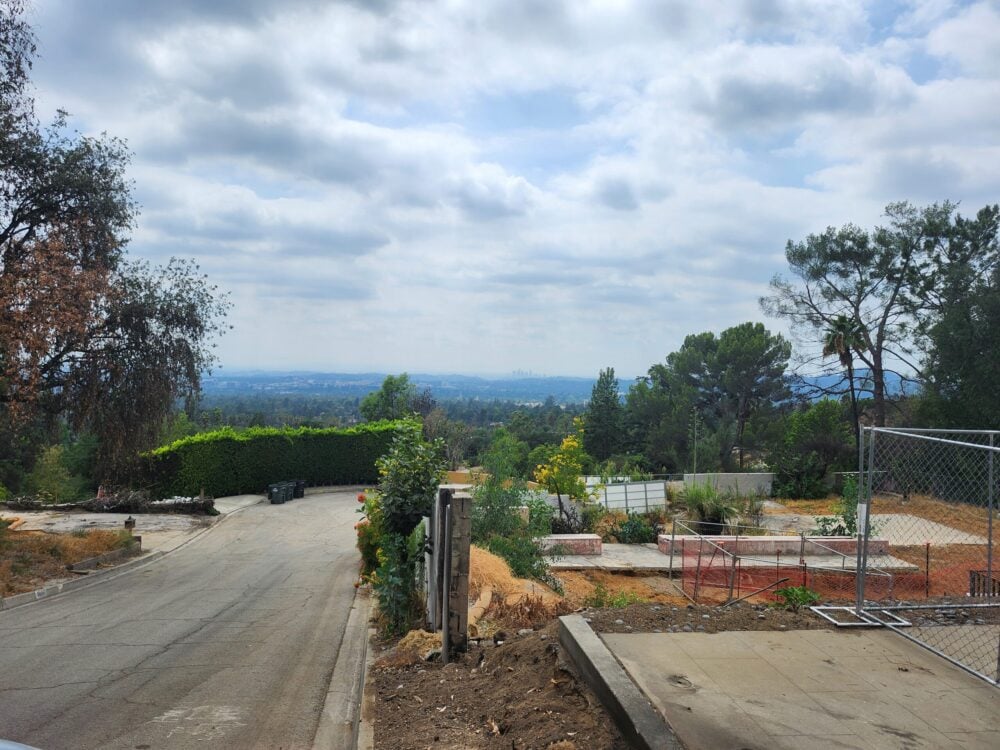

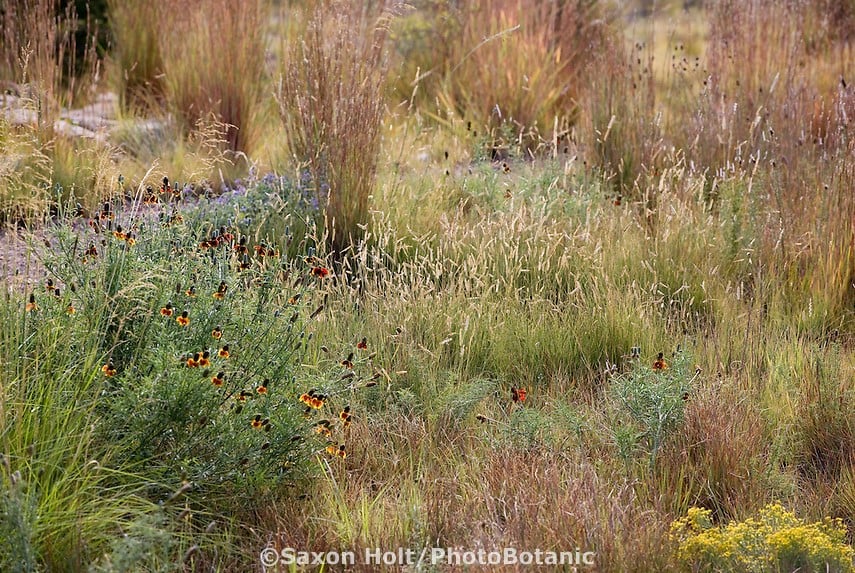


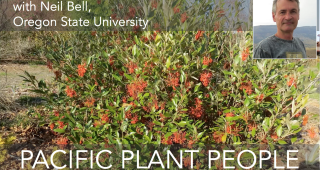
Responses